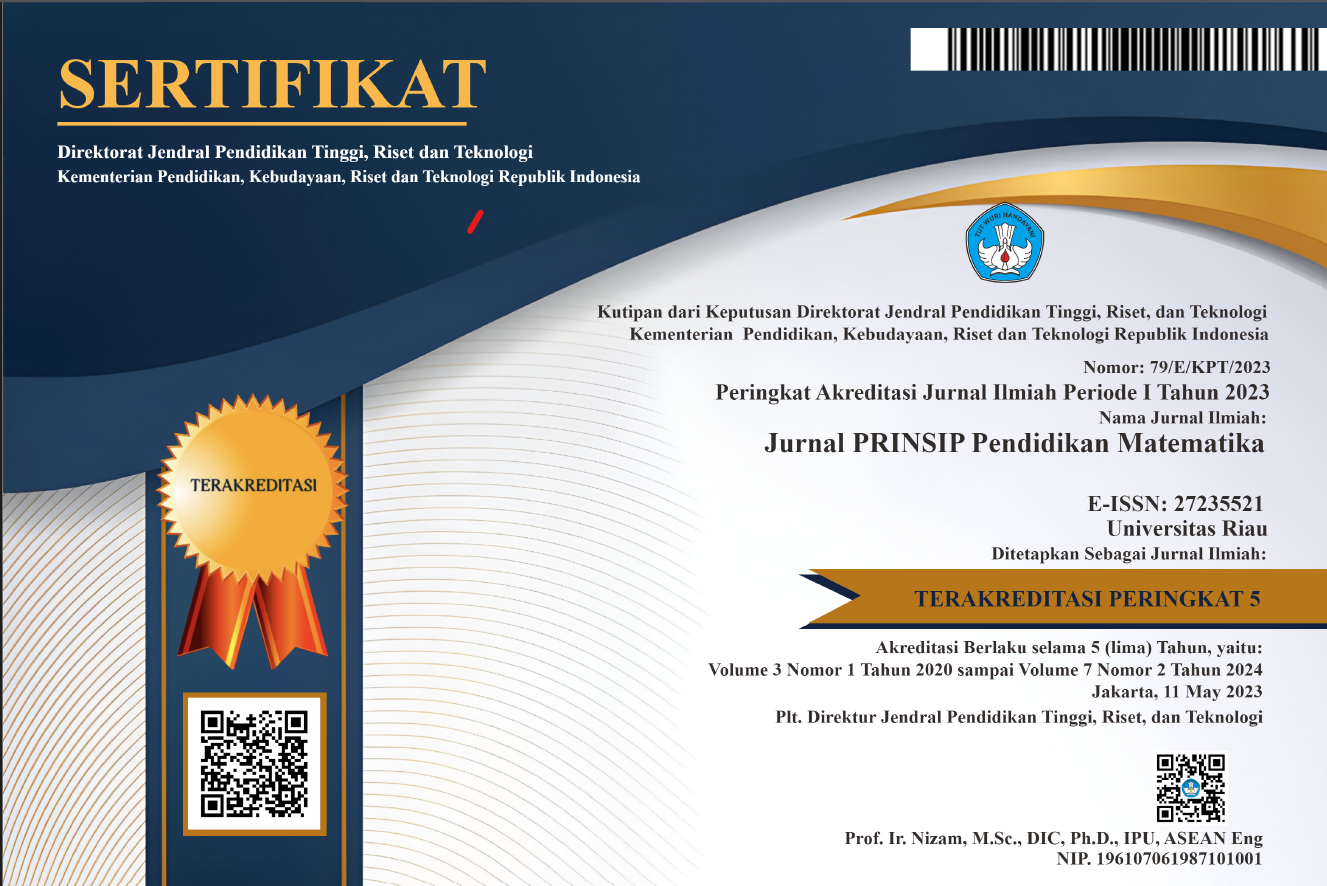PERBEDAAN KECERDASAN SPASIAL ANTARA SISWA LAKI-LAKI DAN SISWA PEREMPUAN KELAS X SMA YPK MEDAN PADA MATERI GEOMETRI
Abstract
This research stems from the writer’s curiosity about the difference of spatial intelligence between male and female students in SMA YPK Medan. The purpose of this research was to describe data of the difference of spatial intelligence between male and female students. This research was a comparative causal research. The sample of this research were 65 students of SMA YPK Medan, which consisted of 32 were female students and 33 were male students. Data to be collected in this research was the data of student’s spatial intelligence which were grouped, i.e. the data of female students spatial intelligence and the data of male students spatial intelligence. The data were collected then analyzed by independent samples t-test in SPSS program. From result of SPSS obtained data Sig 0,02 < 0,05. Based on the result of data analysis could be conluded that there were the difference of spatial intelligence between male and female students in SMA YPK Medan. The average spatial intelligence of male students were 27,06 higher than the average spatial intelligence of female students were 26,76. Then it could be concluded the spatial intelligence of male students better than the spatial intelligence of female students.
Downloads
References
Battista, M.T. (1990). Spatial Visualization and Gender Differences in High School Geometry. Journal for Research in Mathematics Education.
Bratama. (1987). Pengertian-Pengertian Dasar dalam Pendidikan Luar biasa. Jakarta: Depdikbud.
Chatib, M. & Said, A. (2012). Sekolah Anak-anak Juara. Bandung: Penerbit Kaifa.
Creswell, J.W. (2010). Research Design : Pendekatan Kualitatif, Kuantitatif, dan mixed. Yogyakarta : Pustaka Pelajar
Barke dan Engide. (2001). Structural Chemistry and Spatial Ability in Different Cultures. Chemistry Education : Research and Practice in Europe, 2(3), 227 – 239
Bosnyak, A dan Rita, N.K. (2008). The Spatial Ability and Spatial Geometrical Knowledge Of University Students Majored In Mathematics. Acta Didactia Universitatis Comenianae, 8, 1 – 25
Handayani, K., Sutriyono, Prihatnani, E. (2016). Perbedaan Kecerdasan Spasial Antara Siswa Laki-laki dan Siswa Perempuan Pada Kelas X SMA Negeri 1 Salatiga. Prosiding Seminar Nasional “Optimalisasi Active Learning dan Character Building dalam Meningkatkan Daya Saing Bangsa di Era Masyarakat Ekonomi ASEAN (MEA)”, 315 – 321.
Ismunanto. (2015). Ensiklopedia Matematika Jilad 6. Jakarta : PT. Lentera Abadi.
Kartono, K. (1989). Psikologi Wanita (Jilid 1): Mengenal Gadis Remaja dan Wanita Dewasa. Bandung : CV Mandar Maju.
Lestari, N.D.F. (2010). Profil Pemecahan Masalah Matematika Open-Ended Siswa Kelas V Sekolah Dasar Ditinjau dari Perbedaan Gender dan Kemampuan Matematika. Surabaya: Unesa.
Maccoby, E.E & Jacklin, C.N. (1974). The Psychology of Sex Differences. Stanford: Stanford University.
Maier, P.H. (1998). Spatial geometry and spatial ability-How to make solid geometry solid?. Selected Papers from the Annual Conference of Didactics of Mathematics 1996, Osnabrueck, 63 – 75
Nafi’an, M.I. (2011). Kemampuan Siswa Dalam Menyelesaikan Soal Cerita Ditinjau Dari Gender Di Sekolah Dasar. Seminar Nasional Matematika dan Pendidikan Matematika, 571 – 577.
Nemeth, B. (2007). Measurement of The Development of Spatial Ability By Mental Cutting Test. Annales Mathematicae et Informaticae, 34, 123 – 128.
Orton, A. (1992). A Learning Mathematics: Issues, Theory and Practice. Great Britain: Redwood Books.
Purwanti, K.L. (2013). Perbedaan Gender Terhadap Kemampuan Berhitung Matematika Menggunakan Otak Kanan Pada Siswa Kelas I. Jurnal Sawwa, 9(1), 107 – 122.
Simatwa, dan Enose, M.W. (2010). Piaget`s Theoryof Intellectual Development and Its Implication for Instructional Management At Pre-Secodary School Level. Educational Research and Reviews, 5(7), 366 – 371.
Sugiyono. 2010. Statistika Untuk Penelitian. Bandung: Alfabeta
Syahputra, E. (2013). Peningkatan Kemampuan Spasial Siswa Melalui Penerapan Pembelajaran Matematika Realistik. Cakrawala Pendidikan, 3, 353 – 364
Tambunan, S.M. (2006). Hubungan Antara Kemampuan Spasial Dengan Prestasi Belajar Matematika. Jurnal Makara Sosial Humaniora, 10(1), 27 – 32.
Windratie. (2014). Perbedaan Multitasking laki-laki dan perempuan. Jakarta: CNN.





